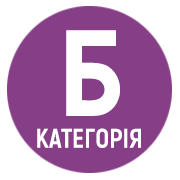MULTIMODALITY AS A WAY OF ANALYSING OF LUCHINO VISCONTI’S FILMOGRAPHY
DOI:
https://doi.org/10.32782/facs-2024-4-22Keywords:
multimodality, intertextuality, intermediality, filmography of Luchino Visconti.Abstract
The purpose of this article is to examine the general provisions of the theory of multimodality and to outline its terminological and functional potential for broadening the methodological tools for analysing cinema, in particular the films of Luchino Visconti. The search for new analytical tools was stimulated by the specificity of the director's work, characterised by complex layers of different cultural strata. The retrospective review reveals the conditions for the emergence of the theory of multimodality, which has its origins in the ideas of post-structuralist semioticians. The definitions of text and intertextuality are outlined, and the shortcomings of their application, namely over-generalisation, metaphoricality and linguocentrism, are noted. The likelihood of using the term 'intermediality' is considered and different types of intermedial interaction are identified. A general characterisation of the understanding of multimodality and its components by contemporary researchers is formed, and the possibilities of applying this methodology to film studies are revealed. The basic terminology of the theory is revealed, in particular modes, layers that form communication, the transition from the concept of grammar to semiotic resources, materiality and affords. The ways of transforming one mode into another are outlined. The vectors of inclusion of the theory of multimodality in the further study of Luchino Visconti's filmography are shown. The scientific novelty lies in the disclosure of the possibilities of including multimodal studies in the analysis of Luchino Visconti's films. Conclusions. The theory of multimodality seems to be a powerful methodological tool that offers a concentration on the modes of communication, their semiotic resources, the materiality of their manifestations and offers. It is also a possible way to create a unified methodology for the analysis of multimodal texts. Since L. Visconti's films are complex multimodal texts, which is explained by the multidirectionality of the director's creative personality, multimodality can be a good methodology for further research of the artist's filmography within the framework of given contemporary discourses.
References
Андрєєва І. Мультимодальний аналіз дискурсу: методологічна основа та перспективи напряму. Одеський лінгвістичний вісник. 2016. №7. С. 3–8.
Калініченко О. Мультимодальність художнього тексту: напрями лінгвопоетологічних досліджень. Науковий вісник Міжнародного гуманітарного університету. Сер.: Філологія. 2016. №21. Том 2. С. 42–45.
Макарук Л. Специфіка сучасного англомовного мультимодального дискурсу. Східноєвропейський журнал психолінгвістики. 2014. Том 1. №2. С. 70–78.
Мірошниченко І. Жанр інфографіки у мас-медійному дискурсі як стислий мультимодальний текст. Лінгвістика. Лінгвокультурологія. 2017. №11. URL: https://www.academia.edu/43049843/Мірошниченко_І_Г_ЖАНР_
ІНФОГРАФІКИ_У_МАС_МЕДІЙНОМУ_ДИСКУРСІ_ЯК_СТИСЛИЙ_МУЛЬТИМОДАЛЬНИЙ_ТЕКСТ?sm=b (дата звернення: 22.08.2024).
Островський О. Взаємодія аудіального компонента з мітичним хронотопом фільму: порівняння стрічок Л. Вісконті та Ф. Зеллера. Художня культура. Актуальні проблеми. 2023. №19(1). С. 130–138. DOI: https://doi.org/10.31500/1992-5514.19(1).2023.283143
Островський О. Приватна бібліотека Лукіно Вісконті як шлях до розуміння творчої біографії митця. Вісник: Українські культурологічні студії. 2024. №13. Том 2. С. 43–47. DOI: https://doi.org/10.17721/UCS.2023.2(13).08
Bateman J. Multimodal Analysis of Film within the GeM Framework. Ilha do Desterro. 2013. No. 64. P. 49-84. DOI: https://doi.org/10.5007/2175-8026.2013n64p49
Bateman J., Schmidt K.-H. Multimodal Film Analysis. How Film Means. New York, London : Routledge, 2012. 330 p.
Gordejuela A. Flashbacks in Film. A Cognitive and Multimodal Analysis. London, New York : Routledge, 2021. 185 p.
Kress G. Gains and losses: New forms of text, knowledge, and learning. Computers and Composition 22. 2005. P. 5–22.
Kress G. Literacy in the New Media Age. London, New York : Routledge, 2003. 171 p.
Kress G. Multimodality. A social semiotic approach to contemporary communication. London, New York : Routledge, 2010. 212 p.
Kress G., van Leeuwen T. Multimodal Discourse. The modes and media of contemporary communication. London : Arnold, 2001. 142 p.
Wildfeuer J. Film Discourse Analysis. Towards a New Paradigm for Multimodal Film Analysis. New York, London : Routledge, 2014. 275 p.
Wildfeuer J. From Text to Recipient. Pragmatic Insights for Filmic Meaning Construction. Film Text Analysis. New Perspectives on the Analysis of Filmic Meaning / ed. by J. Wildfeuer, J.A. Bateman. New York, London : Routledge, 2017. P. 118–140.
Barthes R. Texte. Encyclopaedia universalis. Paris, 1973. Vol. 15. P. 78.
Rajewsky I. Intermediality, Intertextuality, and Remediation: A Literary Perspective on Intermediality. Intermédialités. №6. Fall 2005. p. 43–64. DOI: https://doi.org/10.7202/1005505ar
Multimodality. StudySmarter : веб-сайт. URL: https://www.studysmarter.co.uk/explanations/english/keyconcepts-
in-language-and-linguistics/multimodality/ (дата звернення: 25.08.2024).
Prior P. Moving multimodality beyond the binaries: A response to Gunther Kress’ «Gains and Losses». Computers and Composition 22. 2005. P. 23–30.







